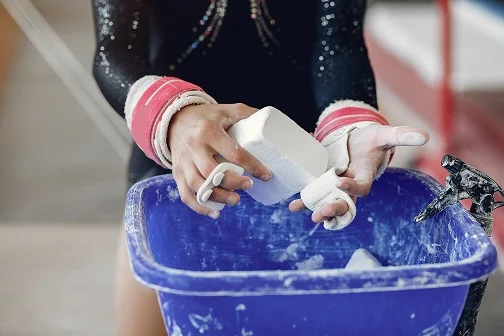Suppose you’re looking for quick and effective Water Tank Cleaning Tips for Small Houses. In that case, the easiest way is to drain your tank completely, scrub the inside with a soft brush, rinse thoroughly with clean water, and disinfect using natural ingredients like vinegar or baking soda instead of chemicals.
This simple cleaning routine keeps your water fresh, safe, and free from bacteria — perfect for small homes that rely on limited storage capacity.
Why Water Tank Cleaning Is Important for Small Houses
Small houses often depend on compact storage systems, which means water sits longer in smaller tanks. Over time, dirt, dust, and minerals build up, leading to bacterial growth and unpleasant smells. Regular water tank cleaning ensures healthy drinking water, prevents algae formation, and keeps your plumbing system in good shape.
In smaller homes, even slight contamination can affect the entire household’s water quality. That’s why adopting domestic water tank care and a consistent cleaning routine is essential. It helps you maintain safe home water cleaning and ensures that every drop you use is clean and hygienic.
How Often Should You Clean the Water Tank
For small houses, experts recommend cleaning the tank every three to four months. If your area receives dusty water or frequent supply interruptions, clean it more often. Smaller tanks get dirtier faster because sediment concentration increases with less volume.
Having a regular water tank maintenance schedule not only improves water quality but also extends the life of your plastic or overhead water storage tank. Consistent cleaning also prevents scale and rust buildup on tank fittings.
Signs Your Tank Needs Immediate Cleaning
Sometimes, you don’t have to wait for the next scheduled cleaning — your tank will show signs that it needs attention right away. Watch for the following:
- Bad odour or strange taste in the water
- Green or brown algae growth on the walls
- Slow or inconsistent water flow
- Cloudy or muddy appearance in stored water
- Slime or residue when you touch the tank surface
If you notice any of these symptoms, it’s time for manual tank cleaning using eco-friendly cleaning methods before the problem worsens.
Tools and Supplies You’ll Need
Cleaning doesn’t require fancy equipment. For a small house setup, you can easily manage with basic supplies like:
A soft brush or mop, a bucket, clean clothes, vinegar, baking soda, and plenty of clean water.
Avoid harsh tools or metal scrapers that can damage your plastic water tank surface.
Using simple, non-toxic cleaning solutions keeps your tank safe for daily use and ensures that no harmful residues enter your water system.
Step-by-Step Water Tank Cleaning Process
Start by turning off the water supply to prevent overflow. Open the outlet valve and drain the tank completely. Once the tank is empty, remove leftover debris or dirt from the base using a mug or scoop.
Next, take a brush or mop and scrub the walls and bottom thoroughly. This helps remove algae and sediment that accumulate over time. For stains, make a paste using baking soda and water — a natural disinfectant that removes dirt and neutralises odours.
After scrubbing, rinse the tank several times with clean water. If you want extra freshness, mix white vinegar with warm water and use it for a final rinse. Vinegar naturally kills germs and bacteria without leaving a chemical trace.
Finally, wipe the inside with a dry cloth and let the tank air dry for 30–40 minutes before refilling. Make sure the tank lid fits tightly to prevent insects or dust from getting in. This manual cleaning process is ideal for domestic water storage systems in small homes.
Natural Alternatives for Cleaning
If you prefer chemical-free water tank maintenance, there are many safe, natural ingredients you can use instead of bleach or detergents.
Baking soda works best for removing stains and neutralising odours. Vinegar is a mild disinfectant that eliminates bacteria and algae. Lemon juice leaves a fresh scent and helps break down organic matter.
These eco-safe tank cleaning solutions not only protect your health but also prevent long-term damage to your plastic water tank. They are part of sustainable green home maintenance practices that keep your environment clean and safe.
Best Practices for Small Houses
Smaller tanks get dirtier quicker because of frequent usage and limited storage. To make cleaning easier, follow these helpful habits:
- Always keep the tank cover sealed tightly.
- Install a fine mesh filter at the inlet to block debris.
- Drain and refill the tank once every few weeks if the water stays unused.
- Avoid direct sunlight exposure — it encourages algae growth.
- Monitor your water for smell or colour changes.
Following these safe household hygiene practices keeps your system cleaner for longer.
Mistakes to Avoid During Cleaning
Many people unknowingly make errors that reduce the effectiveness of cleaning. The most common mistake is using hard brushes or wire tools that scratch the tank walls. Scratches trap bacteria and are difficult to clean later.
Another mistake is using chemical cleaners like bleach or detergent, which may leave harmful residues. Also, forgetting to rinse thoroughly after cleaning can cause leftover dirt or cleaning solution to mix with fresh water.
Neglecting to dry the tank completely or leaving it uncovered afterwards also invites new contamination. Simple awareness of these mistakes helps you maintain hygienic water storage for longer periods.
Maintenance Tips for Long-Term Cleanliness
Keeping your tank clean doesn’t stop after washing—it’s an ongoing process. Inspect your tank monthly for any leaks or cracks. If you use a plastic water tank, ensure it’s placed away from direct sunlight to reduce algae formation.
Always clean the pipes and inlet filters at least once every six months, as buildup inside these parts can recontaminate the tank.
If your water supply contains sediment or minerals, consider installing a pre-filter system. It will prevent most impurities from entering the tank, reducing your cleaning workload.
Health and Safety Benefits
Practising chemical-free tank cleaning brings major health advantages. You avoid exposing your family to bleach residue, and your drinking water stays fresh and safe. It’s also eco-friendly — no toxic runoff enters drains or soil.
In small homes where storage is close to living areas, non-toxic cleaning methods help maintain a healthier indoor environment. Clean tanks also reduce the risks of waterborne diseases caused by bacteria, algae, and dust particles.
Choosing sustainable cleaning practices ensures your home remains hygienic and your family’s water stays pure year-round.
Benefits of Regular Tank Cleaning
Regular domestic water tank cleaning improves water flow, enhances the taste, and prevents rust or odour buildup. It also extends the tank’s lifespan and keeps maintenance costs low.
For small houses, where space and resources are limited, these benefits make a huge difference. Clean water storage means fewer plumbing problems and better overall household hygiene.
In short, maintaining a simple chemical-free water tank cleaning routine is one of the most efficient ways to protect your family’s health and your home’s water system.
Quick Cleaning Checklist
Use this short checklist to make your cleaning routine efficient and easy:
- Drain → Scrub → Rinse → Dry → Refill.
Just five steps, once every few months, can keep your domestic water storage tank spotless and safe for everyday use.
Real-Life Case Study: Small Home in Austin, Texas
To understand how effective a natural cleaning routine can be, let’s look at a real example from a small family home in Austin, Texas.
The homeowners noticed a slight odor and cloudy water coming from their plastic water tank, which held about 400 gallons and supplied water to the entire house. They had been using mild bleach for cleaning but wanted to switch to chemical-free tank cleaning for a safer and more eco-friendly solution.
They followed a simple five-step routine — draining the tank, scrubbing the walls with a soft brush, rinsing thoroughly, and using a mix of baking soda and white vinegar for natural disinfection. Within just one cleaning cycle, they noticed clear water, zero odor, and a fresher taste.
After maintaining this process every three months, their water quality improved, and algae buildup disappeared completely. The homeowner reported that this natural cleaning method was cheaper, safer, and more effective than chemical products.
Conclusion
Keeping your home’s water safe doesn’t have to be complicated. Following these Water Tank Cleaning Tips for Small Houses ensures clean, fresh, and healthy water for your family all year long.
By using simple tools and natural cleaning methods, you can easily maintain your plastic or overhead water tank without relying on harmful chemicals.
Regular cleaning, proper maintenance, and eco-friendly practices are the key to sustainable living and safe water use in smaller homes. Start your chemical-free cleaning routine today and enjoy peace of mind knowing your water is pure, secure, and ready for daily use.
Related Articles:
How to Clean Your Water Tank at Home
How to Clean a Plastic Water Tank in Your House Without Chemicals
Frequently Asked Questions (FAQs)
1. How often should I clean my water tank in a small house?
For small houses, it’s best to clean your water tank every three to four months. Smaller tanks collect dirt, dust, and sediment faster due to frequent use and limited storage space. Regular domestic water tank cleaning ensures clean and safe water for daily use.
2. Can I clean my water tank without using chemicals?
Yes, absolutely! You can easily perform chemical-free tank cleaning using natural ingredients like baking soda, vinegar, or lemon juice. These eco-friendly cleaning methods remove bacteria, odour, and stains safely, without leaving harmful residue.
3. What tools do I need to clean a small house water tank?
You only need a few simple items — a soft brush or mop, a bucket, clean water, and natural agents like vinegar or baking soda. These basic tools are enough for effective manual tank cleaning and are completely non-toxic and eco-safe.
4. Why does my small water tank get dirty so quickly?
Smaller tanks tend to get dirty faster because they store less water, making sediment and minerals concentrate more quickly. Exposure to sunlight or an uncovered lid can also encourage algae formation and bacterial growth. Keeping your tank covered and cleaning regularly prevents this problem.
5. How can I prevent algae or bad odour after cleaning my tank?
To prevent algae growth, always keep the tank lid tightly closed and avoid direct sunlight on the tank. Install a filter at the inlet to block dirt and clean the tank regularly using natural water tank cleaning methods. A mix of vinegar and clean water also helps eliminate bad odours effectively.
References
According to a study by the World Health Organization (WHO), contaminated water can lead to various health issues such as diarrhea, cholera, and other waterborne diseases.
That’s why regular water tank cleaning and using non-toxic cleaning solutions are vital for small homes that rely on stored water.
Summary
Regular water tank cleaning is one of the simplest ways to protect your family’s health and ensure a constant supply of clean water. For small houses, using natural cleaning methods like vinegar or baking soda is safe, affordable, and effective. A clean tank means safer water, longer tank life, and a healthier home every day.
Ethan Wells is the author of Water Tank Guides, a blog focused on practical tips for water tank cleaning, maintenance, and installation. His mission is to help readers keep their water clean, safe, and their tanks long-lasting through simple, easy-to-follow guides.

